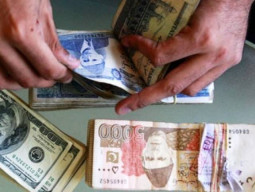
This September, the spotlight was on Pakistan’s ‘fashion industry’. The glitz, glamour and showcase of talent at the recent fashion week drew the attention of the print and electronic media. Yet the industry was also a subject of criticism and chastisement. In a drive to bring, what is deemed to be, a highly profitable and hitherto unregulated economic sector within the tax bracket, the Punjab Revenue Authority (PRA) sealed the premises of acclaimed fashion houses. The charges were varied: non-registration, refusal to comply with requests for information and tax evasion.
The media reacted with its characteristic sensationalism. Fashion designers responded with allegations of high-handedness, harassment and selective targeting on the part of the regulator. Many others hailed the PRA as a courageous crusader on a mission to hold the affluent accountable to the rule of law. The controversy has raised several issues. Is the purchase of a million-rupee bridal dress amidst poverty and hunger morally objectionable? Should the fashion industry be brought within the tax net? Does the PRA possess the legal standing to impose a tax on the ‘service’ provided by fashion designers? Or, do fashion houses only sell a ‘good’?
The first question entails a subjective exercise (applicable equally to other luxury goods) that may not provide a conclusive answer. On the other hand, there is little doubt that the fashion industry is a booming enterprise, with established brands earning enormous profits. The exact value of the industry and its contribution to the country’s GDP is, however, not known. Some estimate the sector to be worth billions, with the average fashion week costing around Rs10-15 million. The case for the industry’s inclusion in the tax net is sound.
It is argued, however, that the PRA has singled out a healthy cash cow, and possibly an easy and visible target in an attempt to bolster tax revenue. But the allegation of selective enforcement is not entirely correct. The Punjab Sales Tax on Services Act of 2012 grants the provincial authority the jurisdiction to levy sales tax on services and lists certain service providers that are subject to the levy: fashion designers, chartered accountants, corporate law consultants, architects, personal care providers (such as salons) and restaurants, etc. Eateries, fitness clubs and (now) fashion houses in Lahore have on legal grounds been subjected to the recent investigation and enforcement campaign of the Authority. It is imperative that the PRA exercises similar muscle against other service providers.
The more valid objection (and one that has already been advanced) is that the exercise of fashion designing cannot, for the purposes of taxation, be categorised as a ‘service’ distinct from the tangible garment it creates. What fashion houses eventually sell is a ‘good’ and not the skill of ‘designing’. The clarification provided by the 2012 Act, however, renders this objection untenable. The fact that the provision of a service entails the use, supply or consumption of a good has no bearing upon its classification for the purposes of the Act. Fashion houses, nonetheless, bill their designing charges within the retail price of the garments into which their skills eventually culminate. The FBR already charges sales tax on the retail prices of fashion garments. The levy of an additional sales tax on the design component of such goods then amounts to double taxation, which is impermissible under the law. Furthermore, fashion designing is a creative activity, which generates intellectual property. According to the division of legislative powers in the Constitution, the PRA arguably has no standing to regulate and tax intellectual property, a power reserved exclusively for the Federation.
The federal and provincial taxation regimes in Pakistan need to be rationalised if a lucrative service industry, such as fashion designing is to be lawfully brought within the tax net. Lack of clarity and overlap in the law has already resulted in courts staying the imposition/recovery of sales tax on legal and architectural consultancy services. Fashion designers have challenged the legality of the levy before the courts. The stakes are high. The fashion industry provides a valuable source of tax revenue worldwide. The fashion business in New York, for instance, generates tax revenue of $10 billion for the American economy. The activism of the PRA is commendable, but may be of no avail if loopholes and contradictions in the law continue to facilitate tax avoidance.
Published in The Express Tribune, September 29th, 2015.
Like Opinion & Editorial on Facebook, follow @ETOpEd on Twitter to receive all updates on all our daily pieces.














































COMMENTS
Comments are moderated and generally will be posted if they are on-topic and not abusive.
For more information, please see our Comments FAQ